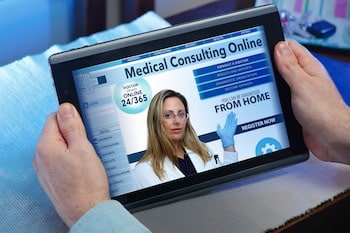5 Significant Hospital Marketing Trends to Watch
 In the months ahead, emerging market trends will reveal many important hospital marketing trends—more than we have space to unwrap in detail here. The following issues, however, are among the most important marketing-related ideas to track as they unfold. You are probably aware of these issues. Although they may be familiar, most are likely to emerge as significant hospital trends this year.
In the months ahead, emerging market trends will reveal many important hospital marketing trends—more than we have space to unwrap in detail here. The following issues, however, are among the most important marketing-related ideas to track as they unfold. You are probably aware of these issues. Although they may be familiar, most are likely to emerge as significant hospital trends this year.
Healthcare Trends...
Creating health-related, streaming, live and real-time video content
Every few months someone proclaims that this is the year of the video—as if video had just been invented. More accurately, the demand for health-related video content has been around for some time. But the breakthrough trend is how technology has increasingly enabled the wider use of video, including streaming, live and real-time content.
The wide appeal and attention-getting power of video over text are widely available to effectively communicate information, explainer content, and live and mobile videos. Social media platforms, in particular—Facebook Live, for example—have opened the doors for users to quickly and easily create video presentations, live/streaming events, interviews, spot news and other content.
Hospitals are recognized as an authoritative source of medical information. People are far more inclined to watch an informative video than to tackle a text explanation. Further, video is easily—and popularly—viewed on smartphones and other mobile devices.
Location-based marketing
The advance of Internet technology has, in effect, placed a computer in the pocket of everyone, everywhere. Consequently, marketing and advertising now have the ability to address one person with exactly the right message at exactly the right time. Marketing sophistication can now determine when an individual is in a particular geographic area, such as being within a hospital service area.
Geofencing, for example, defines a target area where specific ad information is appropriate to present. Conversely, if the individual is close to a competitor’s location, geo-conquesting can alternatively point consumers to the advertiser’s recommended service or service area.
The opioid crisis and social-conscience leadership
In any particular area, hospitals are regarded as authoritative health resources. And doctors, administrators and staff are seen as respected leaders, particularly in matters of the well-being of the community. As we've witnessed, health systems and hospitals can continue to expand their voice and proactive roles to reverse the widespread opioid crisis. This can include marketing outreach programs that join forces with other community leaders, area health systems, and various public and private community organizations.
Technology and expanding telemedicine
The efficiencies, convenience, and benefits of virtual doctor visits, telemedicine and telehealth and have been sidelined, largely due to the practical need for reimbursement and monetization systems. In fact, the technology to enable video and remote access doctor visits is mature, and has been available for some time…but limited in its use.
Progressively, consumer expectations and hospital business plans will bring significant additional progress. The barriers—where telemedicine is financially unattractive to doctors and hospitals—continue to erode. Increasingly, patients have voiced their preferences and expectations to bring technology into healthcare delivery (as it is in other industries), including the convenience of video telemedicine, as well as appointments, email, patient website portals, and other service enhancements.
It is a complex issue, but, as the Wall Street Journal observed nearly two years ago, “telemedicine is finally living up to its potential. Driven by faster Internet connections, ubiquitous smartphones, and changing insurance standards, more health providers are turning to electronic communications to do their jobs—and it’s upending the delivery of health care.”
Increasing the priorities of the hospital patient experience
The connection between patient satisfaction, hospital reimbursement, and continued growth and development is a marketing picture that will expand significantly. Some organizations have been outstanding in their success. But until recently, the concept of improved patient experience has been slow to gain traction with some facilities.
Taking a lesson from major names in the hospital industry, such as Cleveland Clinic, Mayo Clinic, and others, the top leadership in many hospitals are breaking new ground in delivering a sophisticated experience to patient/customers. This is due, in part to the connection of reimbursement and HCAHPS scores, as well as the influence of consumerism in healthcare. Today’s hospital patient is an increasingly sophisticated customer who has come to expect the same level of consumer experience as they realize daily in the retail and service world outside of healthcare.
Please let us know about the trends and issues that you’re dealing with this year. What would you add to this list?
Related Articles:
10 Healthcare Marketing Trends to Watch in 2017
4 Top Hospital Marketing Trends to Watch Right Now
More Marketing Visions and Trends for 2018
5 Most Important Healthcare Marketing Trends in 2022
Top 10 Best-in-Class Healthcare Marketing Trends for 2018 Success









